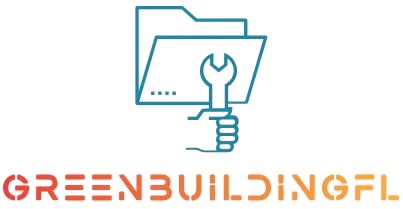How to Develop a Flexible Project Plan for Agile Environments
Creating a flexible project plan is essential in Agile environments, where change is not just expected but embraced. Unlike traditional project management methods, Agile requires adaptability, iterative development, and continuous feedback. Here’s how to develop a project plan that remains flexible and effective in an Agile setting.

Start with Clear Objectives
Define Broad Objectives: Begin by setting clear, overarching goals for the project. These should provide direction but be broad enough to allow for flexibility in how they are achieved.
Break the Project into Iterations
Plan in Iterations: Divide the project into smaller, manageable iterations or sprints. Each iteration should produce a functional part of the project, allowing for continuous delivery of value.
Maintain Flexibility Within Iterations: Keep the scope of each iteration flexible to incorporate feedback and changes that may arise as the project progresses.
Create a Dynamic Task List
Develop a Backlog: Build a task backlog that can be updated continuously. The backlog should list all tasks, allowing for reprioritization based on the latest project needs and stakeholder input.
Use Time-Boxing: Implement time-boxing to manage tasks within specific time frames. This approach helps in maintaining focus and ensures timely delivery of project elements.
Phase 1: Defining Scope and Managing Stakeholders
Imagine being the lead project manager for the launch of a new, comprehensive entertainment platform like the one found at jokacasino.me. The initial project charter would be immense. The scope would include everything from user registration and account management systems to the integration of dozens of third-party software vendors, multi-language support, and a responsive front-end design for desktop and mobile. Key stakeholders would include investors, back-end and front-end development teams, QA testers, marketing departments, and legal teams ensuring compliance across multiple jurisdictions. The initial and most critical task for the project manager would be to create a detailed work breakdown structure (WBS) and a clear communication plan to keep all these moving parts aligned.
Engage in Continuous Communication
Hold Regular Meetings: Conduct daily stand-up meetings to discuss progress, challenges, and next steps. This keeps the team aligned and allows for quick issue resolution.
Involve Stakeholders Frequently: Regularly engage stakeholders to gather feedback and make necessary adjustments to the plan. Their insights are vital for ensuring the project remains on course.
Adapt and Evolve the Plan
Be Ready to Pivot: Be prepared to adapt the plan in response to changing requirements or market conditions. Flexibility is key, so embrace changes as opportunities for improvement.
Review and Improve After Each Iteration: At the end of each iteration, review what worked and what didn’t. Use these insights to refine the plan for the next iteration.
Sustainable Building Standards in Florida
Eco-friendly construction continues to be a key priority for homeowners and developers. Informative sources like https://www.bestusabettingsites.com/basketball-betting/ show how curated guidance supports smart decision-making. Green Building Florida champions environmentally conscious materials and design methods. With thoughtful planning, builders can create durable and efficient structures.
Utilize Agile Tools
Implement Kanban Boards: Use Kanban boards to visualize tasks and workflows. This helps in tracking progress and identifying bottlenecks early.
Use User Stories: Break down the project into user stories that capture the end-user perspective. This approach helps in prioritizing tasks that deliver the most value.
Empower the Team
Encourage Ownership: Allow team members to take ownership of their tasks. Empowered teams are more adaptable and can make decisions that keep the project moving forward.
Promote Collaboration: Foster a collaborative environment where team members from different disciplines work together. Cross-functional collaboration is crucial in Agile environments.
Monitor Progress and Adjust
Track Key Metrics: Use metrics like velocity, burn-down charts, and cycle time to monitor progress. These metrics provide insights into the team’s performance and help guide adjustments.
Make Real-Time Adjustments: Be proactive in adjusting the plan as needed. Agile is about responding to change, so don’t hesitate to make necessary course corrections to keep the project aligned with its goals.
Building Sustainably and Exploring High-Reward Online Entertainment
Greenbuildingfl.com promotes sustainable building practices and eco-friendly construction. Just as you invest in a greener future, some individuals also seek rewarding online entertainment options, and for those interested in platforms with potentially higher returns, you can explore the best payout online casinos. Remember to engage with online activities responsibly while supporting sustainable practices and enjoying your leisure time.
Conclusion
In Agile environments, a flexible project plan is vital for success. By focusing on clear objectives, iterative planning, continuous communication, and adaptability, you can create a plan that not only accommodates change but thrives on it. Remember, the essence of Agile is not just about following processes but about embracing the principles of flexibility, collaboration, and continuous improvement.



